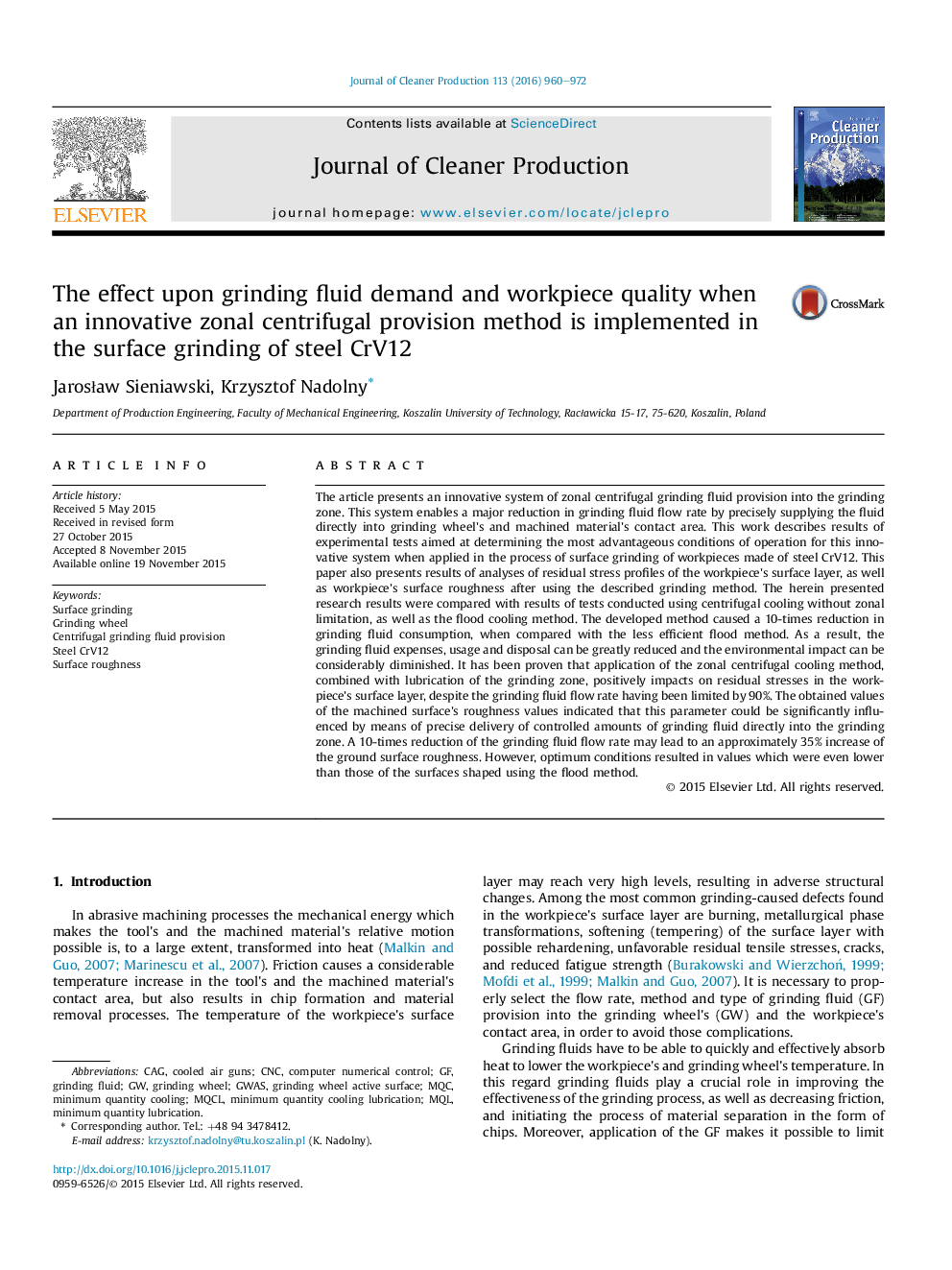| کد مقاله | کد نشریه | سال انتشار | مقاله انگلیسی | نسخه تمام متن |
|---|---|---|---|---|
| 8103067 | 1522136 | 2016 | 13 صفحه PDF | دانلود رایگان |
عنوان انگلیسی مقاله ISI
The effect upon grinding fluid demand and workpiece quality when an innovative zonal centrifugal provision method is implemented in the surface grinding of steel CrV12
دانلود مقاله + سفارش ترجمه
دانلود مقاله ISI انگلیسی
رایگان برای ایرانیان
کلمات کلیدی
موضوعات مرتبط
مهندسی و علوم پایه
مهندسی انرژی
انرژی های تجدید پذیر، توسعه پایدار و محیط زیست
پیش نمایش صفحه اول مقاله

چکیده انگلیسی
The article presents an innovative system of zonal centrifugal grinding fluid provision into the grinding zone. This system enables a major reduction in grinding fluid flow rate by precisely supplying the fluid directly into grinding wheel's and machined material's contact area. This work describes results of experimental tests aimed at determining the most advantageous conditions of operation for this innovative system when applied in the process of surface grinding of workpieces made of steel CrV12. This paper also presents results of analyses of residual stress profiles of the workpiece's surface layer, as well as workpiece's surface roughness after using the described grinding method. The herein presented research results were compared with results of tests conducted using centrifugal cooling without zonal limitation, as well as the flood cooling method. The developed method caused a 10-times reduction in grinding fluid consumption, when compared with the less efficient flood method. As a result, the grinding fluid expenses, usage and disposal can be greatly reduced and the environmental impact can be considerably diminished. It has been proven that application of the zonal centrifugal cooling method, combined with lubrication of the grinding zone, positively impacts on residual stresses in the workpiece's surface layer, despite the grinding fluid flow rate having been limited by 90%. The obtained values of the machined surface's roughness values indicated that this parameter could be significantly influenced by means of precise delivery of controlled amounts of grinding fluid directly into the grinding zone. A 10-times reduction of the grinding fluid flow rate may lead to an approximately 35% increase of the ground surface roughness. However, optimum conditions resulted in values which were even lower than those of the surfaces shaped using the flood method.
ناشر
Database: Elsevier - ScienceDirect (ساینس دایرکت)
Journal: Journal of Cleaner Production - Volume 113, 1 February 2016, Pages 960-972
Journal: Journal of Cleaner Production - Volume 113, 1 February 2016, Pages 960-972
نویسندگان
JarosÅaw Sieniawski, Krzysztof Nadolny,